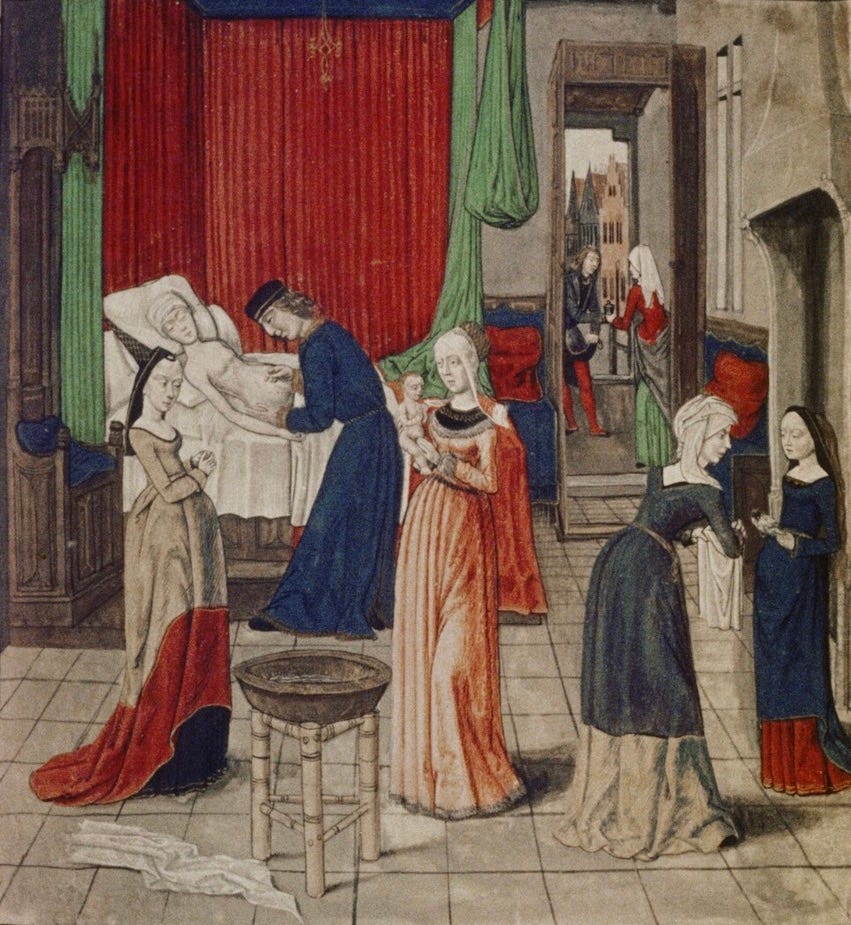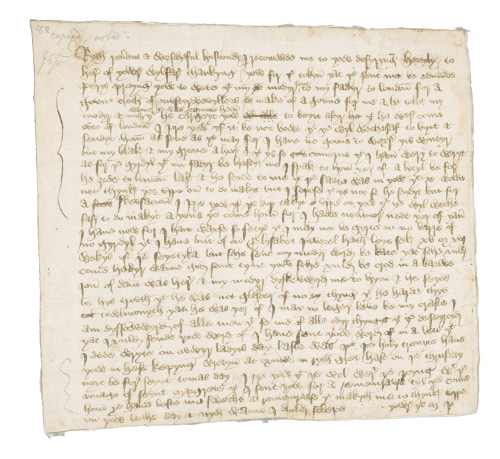Last time, we – and John Paston – met Margaret Mautby, the young woman John’s parents had chosen for him to marry. This time, we’ll hear from Margaret herself, in a letter that’s one of my favourites in the whole collection.
Agnes Paston was right that the two eighteen-year-olds liked each other, and they were married before the end of 1440. Today’s letter was written a year later, when Margaret – now Margaret Paston – was at home in Norfolk with Agnes, and John in London with his father.
Before I give you the text, a bit of alphabetical excitement: it contains another lost character to go with thorn (þ), the one we’ve already encountered. This time it’s ‘yogh’ – ȝ – which came to be indistinguishable in form from a ‘z’ written with a tail, but was used where modern English has ‘gh’ or ‘y’.
(I hope that’ll be clearer when you see it in situ. Technically, I gather, it represents the palatal semivowel, the voiced velar fricative, or the unvoiced velar fricative, which I have to confess doesn’t help me any, but I’d love to hear from anyone more knowledgeable...)
The Oxford English Dictionary offers a lovely quotation on the subject from Mandeville’s Travels, a fantastical travelogue written in French in the mid-fourteenth century and translated into English at the beginning of the fifteenth:
Wee in Englond haue in oure langage & speche ii lettres mo þan þei haue in hire ABC & þat is þ & ȝ, the whiche ben clept þorn & ȝogh.
To ‘clepe’ is to call, so the sentence in modern English reads:
We in England have in our language and speech two letters more than they have in their ABC, and that is þ and ȝ, the which are called thorn and yogh.
Now for today’s letter, in the other sense of the word.1
Here’s the full text.
On the outside, with traces of the red wax seal:
To my ryth reuerent and worscheful husbond Jon Paston
And on the inside, a single big block of text:
Ryth reuerent and worscheful husbond I recomavnde me to yow desyryng hertyly to here of yowre wylfare thankyng yow for þe tokyn þat ye sent me be Edmunde Perys preyng yow to wete þat my modyr sent to my fadyr to London for a govne cloth of mvstyrddevyllers to make of a govne for me and he tolde my modyr and me wanne he was comme hom þat he cargeyt yow to beyit aftyr þat he were come ovte of London. I pre yow yf it be not bowt þat ye wyl wechesaf to byit and sendyt hom as sone as ye may for I haue no govne to weyre þis wyntyr but my blake and my grene a lyer and þat ys so comerus þat I am wery to weryt. As for þe gyrdyl þat my fadyr be hestyt me I spake to hym þer of a lytyl be fore he ȝede to London last and he seyde to me þat þe favte was in yow þat ȝe wolde not thynke þer vppe on to do makyt but I sopose þat ys not so he seydyt but for a skevsacion. I pre yow yf ye dor takyt vppe on yow þat ye wyl weche safe to do makyt a yens ye come hom for I hadde neuer more nede þer of þan I haue now for I ham waxse so fetys þat I may not be gyrte in no barre of no gyrdyl þat I haue but of on. Elysabet Peverel hath leye seke xv or xvi wekys of þe seyetyka but sche sent my modyr word be Kate þat sche xuld come hedyr wanne God sent tyme þoov sche xuld be crod in a barwe. Jon of Dam was here and my modyr dyskevwyrd me to hym and he seyde be hys trovth þat he was not gladder of no thyng þat he harde thys towlmonyth þan he was þer of. I may no lenger leve be my crafte I am dysscevwyrd of alle men þat see me. Of alle odyr thyngys þat ye deseyreyd þat I xuld sende yow word of I haue sent yow word of in a letter þat I dede wryte on ovwyr ladyis day laste was. þe holy trenyte haue yow in hese kepyng. Wretyn at Oxnede in ryth gret hast on þe Thrusday next be fore Seynt Tomas day. I pre yow þat ye wyl were þe reyng wyth þe emage of Seynt Margrete þat I sent yow for a rememravnse tyl ye come hom. Ye haue lefte me sweche a rememravnse þat makyth me to thynke vppe on yow bothe day and nyth wanne I wold sclepe.
Yowre ys M P
Keep reading with a 7-day free trial
Subscribe to The H Files by Helen Castor to keep reading this post and get 7 days of free access to the full post archives.


